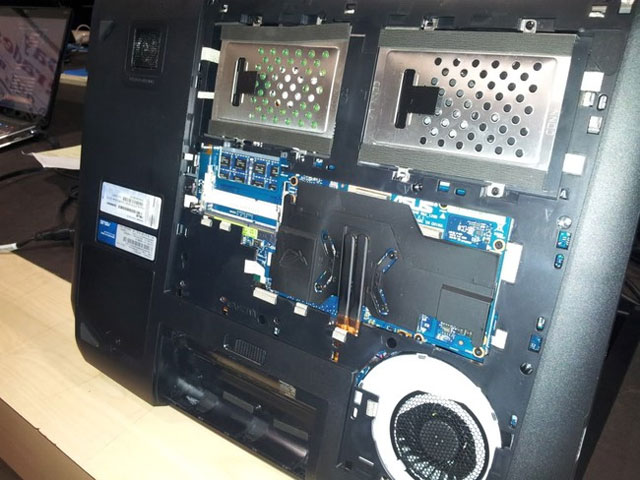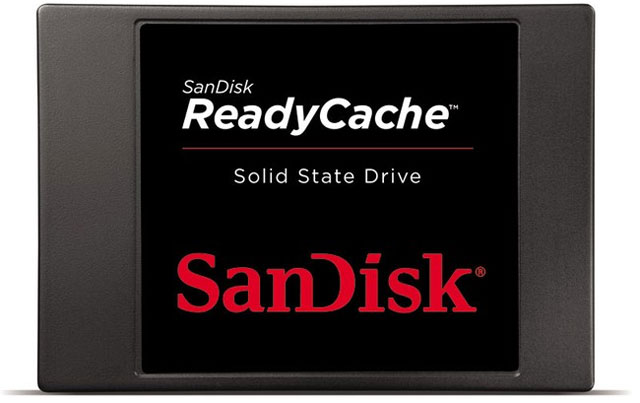How to choose SSD to suit your needs
We all know the benefits of using SSD: providing high speed access. However, because the price is quite high, the choice of SSD with suitable capacity for use is really a problem.
Some of the notes below will help you be more discerning in choosing the SSD that suits your needs.
Combine SSD with HDD
When using this combination method, SSD will be used to install the operating system, the software is frequently used, and the HDD is used to store data, movies . With laptops, some models are equipped up to two hard drive cases, one SSD case and one HDD storage case.
If the board supports RAID, then enable it to improve performance. However, usually laptops only have one hard drive slot. In this case, you can buy more Caddy accessories to store the hard drive, mount it via an optical drive, for use with an internal SSD. Suitable capacity for this option: 60GB - 120GB range. This is a great way for people to choose.
 How to choose SSD to suit your needs Picture 1
How to choose SSD to suit your needs Picture 1
ASUS G75VW - Laptop has up to 2 hard drives.
 How to choose SSD to suit your needs Picture 2
How to choose SSD to suit your needs Picture 2
Psued Caddy to fly.
Only use SSD
Alternatively, you can choose to use only SSD. Most laptops have only one hard drive, and you need to store data on the SSD for regular use. If you have this need, this is the right choice. You should choose the SSD with the minimum capacity of 128GB, recommended above 180GB because you also contain much needed data besides containing the operating system.
SSD as a buffer
Another option is to use SSD as a buffer. Instead of installing the operating system, SSD is used to cache. Many laptops are now used to speed up resume, for example. At cache, files are frequently accessed as file system, the operating system will actively transfer these files to SSD. On subsequent uses, Windows loads those files from the buffer and results in a much faster access speed.
 How to choose SSD to suit your needs Picture 3
How to choose SSD to suit your needs Picture 3
To use SSD cache, you need to enable SSD Cache or Intel Smart Respond Technology (this is a condition to determine if the board supports SSD cache). For some laptops like ASUS have 24GB SSD cache, you need to install the accompanying Express Cache software to activate. Have you ever wondered if you can install the operating system on this SSD cache? Then the answer is no (because it has already been cached, it is not possible to install the operating system, and the case of installing the operating system on SSD is different).
A type of hard drive called a hybrid hard drive is also suitable for this need, because only one hard drive is needed, you can use a hybrid hard drive.
In addition, for ultra-thin Ultrabook and Macbook models, most manufacturers have designed SSDs quite specifically for these models (especially Macbook series) to ensure thinness for the machine, so replacing So other SSDs are very difficult to implement.
With game players
One thing to note: Because SSDs are high-speed, it helps to improve data access very clearly, load files quickly. However, they do not improve the processing tasks required by the CPU / graphics card such as video processing, do not improve the number of frames when playing games (which can be slightly improved for games that frequently load data). .
Therefore, if you need to improve the ability to handle graphics, play games smoother . the choice of high capacity SSD is not suitable. In this case, you just need to choose a low-capacity SSD to install the operating system to help it boot faster.
Note when using SSD
Because the price of SSD is quite expensive, it is difficult to decide the capacity level to suit the demand. Also, when the SSD is full, the speed decreases. Therefore, according to Anandtech technology page, for SSDs to achieve the highest performance, the advice you should leave blank ¼ on the total SSD capacity.
Besides, the actual capacity of SSD is always lower than the capacity listed on the package, such as the 240GB SSD, the actual capacity you use is only about 223GB. This loss is the spare capacity, the user cannot use it. It is responsible for ensuring that the SSD is never really filled to keep the performance stable, and it will compensate for the memory failure if any occurs during use.
You should read it
- How to choose laptop CPU that meets the needs (part 2)
- How much SSD capacity is enough? Which hard drive should I choose?
- How to choose to buy a GPU for a computer
- How to choose a safe, convenient suitcase when traveling far
- Move a lot, choose which laptop?
- How to choose gifts for each age for children on Tet holiday for children 1/6
- How to choose laptop CPU that meets the needs (part 1)
- Choose a boss, don't choose a job!
- Instructions to choose to buy television suitable for families with older people
- 3 steps to choose jeans that fit without trying
- Advice on choosing suitable generators for families
- Choose to buy a portable hard drive






 Top 5 Apps to choose glasses that suit your face - Apps to try on glasses
Top 5 Apps to choose glasses that suit your face - Apps to try on glasses Choosing and using a mask properly
Choosing and using a mask properly How to Wear a Prince of Wales Suit
How to Wear a Prince of Wales Suit So choose a computer, laptop how to fit?
So choose a computer, laptop how to fit? How to choose the right air conditioner for your needs?
How to choose the right air conditioner for your needs? Instructions for choosing the right Wi-Fi router
Instructions for choosing the right Wi-Fi router